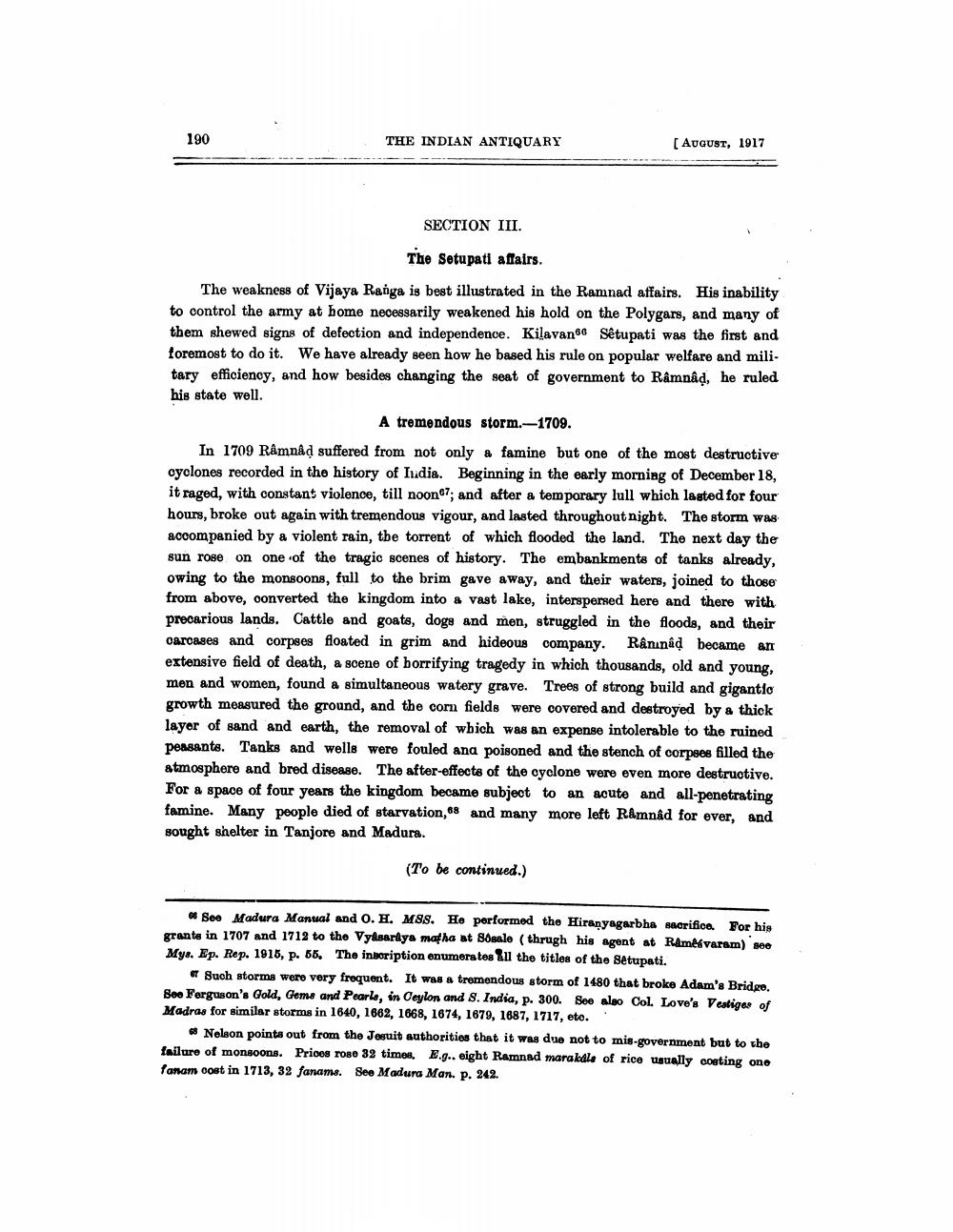________________
190
THE INDIAN ANTIQUARY
[ August, 1917
SECTION III.
The Setupati affairs. The weakness of Vijaya Ranga is best illustrated in the Ramnad affairs. His inability to control the army at home necessarily weakened his hold on the Polygars, and many of them shewed signs of defection and independence. Kilavan66 Setupati was the first and foremost to do it. We have already seen how he based his rule on popular welfare and military efficiency, and how besides changing the seat of government to Râmnâd, he ruled his state well.
A tremendous storm.--1709. In 1709 Râmnând suffered from not only a famine but one of the most destructive cyclones recorded in the history of India. Beginning in the early morning of December 18, it raged, with constant violence, till noon7; and after a temporary lull which lasted for four hours, broke out again with tremendous vigour, and lasted throughout night. The storm was accompanied by a violent rain, the torrent of which flooded the land. The next day the sun rose on one of the tragic scenes of history. The embankments of tanks already, owing to the monsoons, full to the brim gave away, and their waters, joined to those from above, converted the kingdom into & vast lake, interspersed here and there with procarious lands. Cattle and goats, dogs and men, struggled in the floods, and their caroages and corpses floated in grim and hideous company. Ranınad became an extensive field of death, a scene of borrifying tragedy in which thousands, old and young, men and women, found a simultaneous watery grave. Trees of strong build and gigantic growth measured the ground, and the corn fields were covered and destroyed by a thick layer of sand and earth, the removal of which was an expense intolerable to the ruined peasants. Tanks and wells were fouled and poisoned and the stench of corpses filled the atmosphere and bred disease. The after-effects of the cyclone were even more destructive. For a space of four years the kingdom became subject to an acute and all-penetrating famine. Many people died of starvation, and many more left Ramnad for ever, and sought shelter in Tanjore and Madura.
(To be continued.)
"So Madura Manual and O. H. MSS. He performed the Hiranyagarbha sacrifico. For his granta in 1707 and 1712 to the Vyasarkys mafha at Sósale (thrugh his agent at Rame varam) see Mys. Ep. Rop. 1915, p. 68. The inboription enumerates Au the titles of the setupati.
Such storms were very frequent. It was a tremendous storm of 1480 that broke Adam's Bridgo. Soo Ferguson's Gold, Gems and Pearls, in Ceylon and 8. India, p. 300. See slao Col. Love's Vestiga of Madras for similar storms in 1640, 1662, 1668, 1674, 1679, 1887, 1717, etc..
Nelson points out from the Jesuit authorities that it was due not to mis-government but to the failure of monsoons. Prioos rose 32 times. E.g.. eight Ramnad marakdle of rice usually coating ono fanam cost in 1713, 32 fanams. See Madura Man. p. 242.




